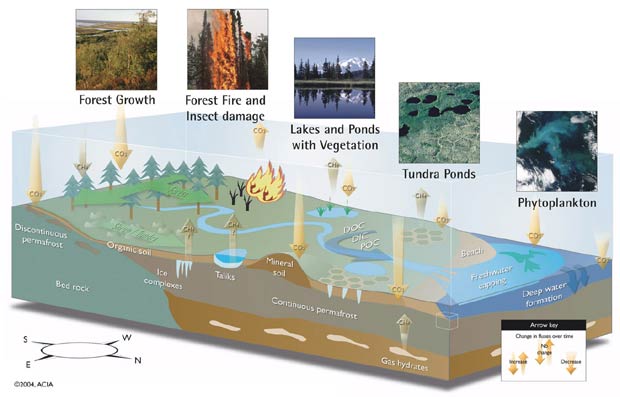

Langues:

Carbon cycle in the ArcticThis schematic illustrates changes in the cycling of carbon in the Arctic as climate warms. For example, beginning at the left of the figure, the boreal forest absorbs CO2 from the atmosphere and this is expected to increase, although forest fires and insect damage will increase in some areas, releasing more carbon to the atmosphere. Increasing amounts of carbon will also move from the tundra to ponds, lakes, rivers, and the continental shelves in the form of carbon dissolved in water (dissolved organic carbon (DOC), dissolved inorganic carbon (DIC), and particulate organic carbon (POC)).  Source : ACIA Impacts of a Warming Arctic: Arctic Climate Impact Assessment Publication apparentée :
Other Figures & Tables on this publication : Observed Arctic Temperature, 1900 to Present Observed sea ice September 1979 and September 2003 Projected Vegetation, 2090-2100 Arctic Thermohaline Circulation Projected Arctic Surface Air Temperatures Projected opening of northern navigation routes Factors influencing UV at the surface 1000 years of changes in carbon emissions Projected Surface Air Temperature change 1990-2090 |